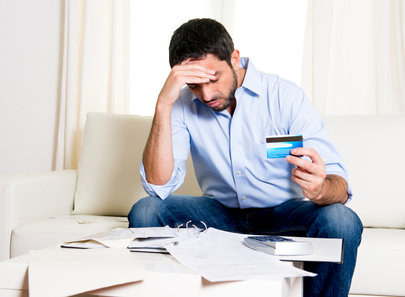Rising interest rates, normally the sign of a booming economy, could hurt millions of vulnerable credit heavy households.
Some market and credit card industry observers warn that many people suddenly might not be able to pay their bills as in the last downturn. What happens, they ask, if millions of people, as in the financial crisis of 2008, suddenly can’t pay subprime auto loans or credit card bills because rates rise?
“This could be detrimental on several different levels. Unfortunately, because we have just had this tremendous surge in sub-prime auto loans, unlike anything we have seen in prior cycles,” says Danielle DiMartino Booth, a former Dallas Federal Reserve adviser and now an economic consultant.
“My greatest fear is that some of the people who lost their homes in the housing bubble are going to be the same people who the repo man will visit,” she said.
Card Debts Hitting New Peaks
With credit card debt once again reaching historic highs a few observers warn 2018 could be a difficult year for millions of American households.
Booth notes some disturbing 2008 parallels: Savings rates are declining; auto loans are becoming a problem and card debt is once again hitting record numbers.
Average household credit card debt has gone up every year since 2013, going from $6,224 to $7,135 (See chart), according to NerdWallet.com.
Will You Still Have that Car Next Week?
Booth says auto loan delinquencies rates have already exceeded financial crisis levels and card debt is rising with interest rates.
Credit card balances, according to the latest Federal Reserve report, “peaked at just over $1 trillion in 2007 and 2008. During the recession, these balances fell to under $800 billion. They have since rebounded steadily and are again at record levels, the central bank says.
Indeed, in November, card debt went up some $11.2 billion, reaching a total of $1.023 trillion. That beat the pre-recession record of $1.021 trillion, according to the Fed.
O.K. for Now but Look Out for Next Month
So far, notes Bill Hardekopf of LowCards.com., cardholders seem as though they can handle bigger debt because the economy is stronger than a decade ago. Card default rates are now low, he adds.
“But interest rates are expected to continue to rise this year. And that will put more pressure on those who carry a month to month balance and pay those higher interest rates each month,” Hardekopf adds.
Hardekopf says the vulnerable are those who never pay off balances; those carrying big interest-bearing balances from month to month.
An official of a credit rating agency recently wrote about this potential problem.
“Auto loans and credit cards bear watching,” writes Rita Sahu, a vice president with the credit rating agency Moody’s in a 2018 banking outlook report.
“Auto loans delinquencies are above pre-crisis levels at around 2.3 percent,” she writes.
Sahu warns that car loans and credit card numbers are “negative outliers.”
Consumption and More Consumption
And that, adds Booth pointing to the Sahu report, could have implications for the economy.
“As we are a nation driven by consumption that could certainly hurt overall economic growth,” she warns. Booth believes the economy, for the next two quarters, will be “on a sugar high” from tax cuts but will then slump.
What’s to Be Done?
If a slump comes, if interest rates spike, will you be ready for it?
Be sure you can pay off your credit cards each month. And, if you don’t, start now to build an emergency cash fund that you can use in the case of unexpected hard times.
![]()
